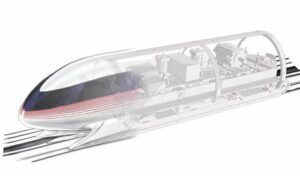Explore key techniques and best practices to help your business maximize warehouse efficiency and achieve optimal inventory/distribution management!
Efficient Layout and Space Utilization
An optimized warehouse layout is the foundation for effective inventory and distribution management. Evaluate the current layout and identify areas for improvement. Consider factors such as the flow of materials, ease of access, and proximity to shipping and receiving areas. Maximize vertical space by utilizing racks and shelves for efficient storage. Implement a logical placement system based on product characteristics and demand frequency. By optimizing space utilization and layout, businesses can minimize travel time, reduce congestion, and improve overall operational efficiency.
Accurate Inventory Management
Effective inventory management is essential for maintaining optimal stock levels, reducing carrying costs, and preventing stockouts. Implement robust inventory control systems, such as barcode scanning and radio frequency identification (RFID), to track and manage inventory accurately. Utilize inventory management software to gain real-time visibility into stock levels, monitor demand patterns, and automate reordering processes. Regularly conduct physical inventory counts and cycle counts to ensure data accuracy and identify discrepancies. By adopting accurate inventory management practices, businesses can improve order fulfillment, reduce excess inventory, and enhance customer satisfaction.
Implement Lean Principles
The principles of Lean management can significantly improve warehouse efficiency. Implement practices such as Just-in-Time (JIT) inventory management, which focuses on receiving and processing goods as close to the time of need as possible. Minimize excess inventory by establishing effective communication channels with suppliers, ensuring timely deliveries, and reducing lead times. Embrace the concept of continuous improvement by encouraging employee involvement and empowering them to suggest process enhancements. By adopting Lean principles, businesses can streamline warehouse operations, minimize waste, and achieve a Lean and efficient supply chain.
Utilize Technology and Automation
Embracing technology and automation can revolutionize warehouse operations. Implement warehouse management systems (WMS) to streamline processes, optimize inventory flow, and automate order fulfillment. Barcode scanning, voice picking systems, and robotics can enhance order accuracy, reduce manual errors, and increase operational speed. Utilize automated conveyor systems and sorters to expedite order processing and minimize handling time. Embrace technologies like Internet of Things (IoT) to enable real-time tracking of goods and monitor warehouse conditions. By leveraging technology and automation, businesses can improve efficiency, reduce costs, and enhance overall warehouse performance.
Optimize Order Fulfillment and Pick Strategies
Efficient order fulfillment processes are crucial for meeting customer expectations. Analyze order patterns and implement strategies such as batch picking, zone picking, or wave picking to optimize order fulfillment efficiency. Group orders based on proximity to minimize travel time within the warehouse. Utilize efficient picking techniques such as pick-to-light, pick-to-voice, or pick-to-carton to enhance accuracy and speed. Regularly review and refine picking strategies based on data and feedback to continuously improve fulfillment processes. By optimizing order fulfillment and pick strategies, businesses can reduce errors, accelerate order processing, and improve customer satisfaction.
Continuous Monitoring and Performance Measurement
Continuous monitoring and performance measurement are essential for identifying areas of improvement and driving warehouse optimization. Establish key performance indicators (KPIs) such as order cycle time, order accuracy, and order fill rate. Regularly track and analyze KPIs to identify bottlenecks, inefficiencies, and areas for improvement. Conduct root cause analysis to understand the underlying causes of issues and implement corrective actions. Seek feedback from employees, customers, and other stakeholders to gain insights into pain points and implement necessary improvements. By continuously monitoring performance and striving for improvement, businesses can drive warehouse optimization and achieve operational excellence.
Warehouse optimization plays a critical role in streamlining inventory and distribution management, enhancing efficiency, and meeting customer demands. By implementing efficient layout and space utilization, accurate inventory management, Lean principles, technology and automation, optimized order fulfillment strategies, and continuous monitoring, businesses can achieve optimal warehouse performance. The key to success lies in a holistic approach that integrates people, processes, and technology to drive continuous improvement and deliver exceptional customer experiences. With warehouse optimization as a priority, businesses can reduce costs, enhance productivity, and gain a competitive edge in today’s dynamic marketplace.
The Perfect Planner Team is here if you have any questions about Warehouse Optimization, and we offer a free consultation service. If you would like to connect with us on this article or any other topic, please message us on LinkedIn, shoot us an email at info@perfectplanner.io, visit our website at www.perfectplanner.io, or give us a call at 423.458.2979.
Author: Thomas Beil
Publication Date: September 11, 2023
© Copyright 2023 Perfect Planner LLC. All rights reserved.






